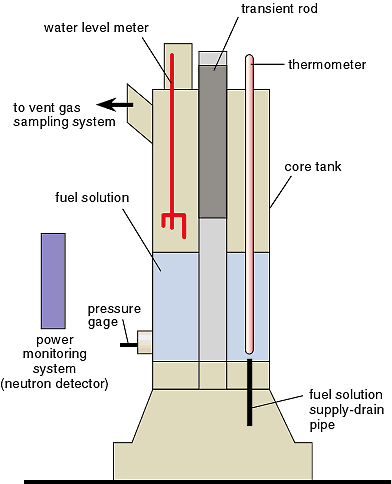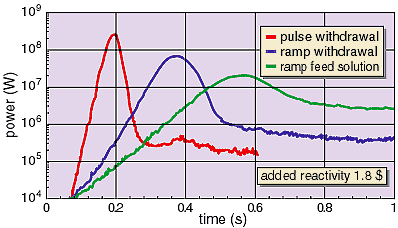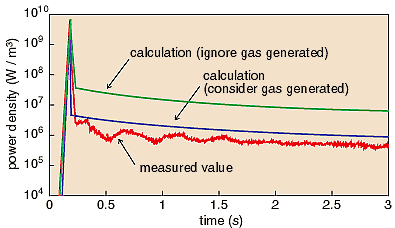Nuclear fuel facilities such as those for fuel fabrication, spent
fuel reprocessing and so on, must be designed not to give rise
to a criticality accident or to keep dose rates to the public
less than the acceptable value even if a criticality accident
occurs. The number of nuclear fissions in a criticality accident
is assumed, for safety evaluation, to be 1019 to 10 20 which is larger than what has actually occurred in past
accidents. Too high a safety margin, however, increases the obligation
of the facility and induces a low efficiency of operation. To
overcome this problem, JAERI constructed the criticality experiment
apparatus TRACY and performs model experiments on criticality
accidents aiming at developing reasonable method for safety evaluation.
TRACY is an apparatus to attain criticality by supplying fuel
solution to a tank as shown in Fig. 6-7. Types of power (number
of fissions in unit time) fluctuations are changed by the way
the criticality accident arises (the method of reactivity addition)
as shown in Fig. 6-8. According to the method, amounts of hydrogen
gas generation due to water radiolysis by radiations and the speed
of temperature increase are different also and the degree of feedback
reactivity becomes different. By solving these mechanisms, a scale
of criticality accident can be estimated. Figure 6-9 shows a trend
of the power fluctuations of TRACY calculated with a computer
code which is being developed. Taking into account the reactivity
effect of gas arising from the radiolysis of water, the power
fluctuations measured can be analyzed more accurately. Now, experimental
data are also being obtained which are important to solve the
mechanisms of transportation of radioactive materials. |


